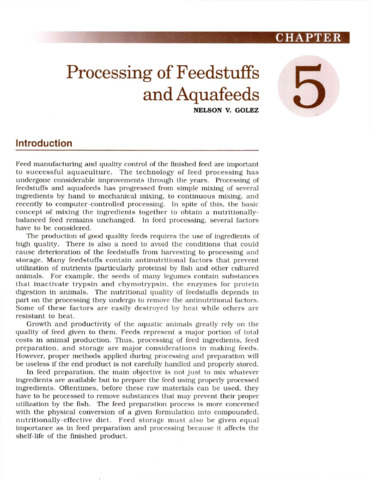Perlihatkan publikasi sederhana
Development of formulated feeds for grow-out culture of grouper (Epinephelus coioides) - tank and field studies
| dc.contributor.author | Millamena, Oseni M. | |
| dc.contributor.author | Toledo, Joebert D. | |
| dc.contributor.editor | Rimmer, Michael A. | |
| dc.contributor.editor | McBride, Shannon | |
| dc.contributor.editor | Williams, Kevin C. | |
| dc.date.accessioned | 2015-10-14T03:56:50Z | |
| dc.date.available | 2015-10-14T03:56:50Z | |
| dc.date.issued | 2004 | |
| dc.identifier.citation | Millamena, O. M., & Toledo, J. D. (2004). Development of formulated feeds for grow-out culture of grouper (Epinephelus coioides) - tank and field studies. In M. A. Rimmer, S. McBride, & K. C. Williams (Eds.), Advances in grouper aquaculture (pp. 115–118). Canberra: Australian Centre for International Agricultural Research. | en |
| dc.identifier.isbn | 9781863204385 | |
| dc.identifier.uri | http://hdl.handle.net/10862/2416 | |
| dc.description.abstract | The objectives of this study were to compare the performance of a Southeast Asian Fisheries Development Centre (SEAFDEC) formulated diet with a commercial feed for growout culture of grouper and to transfer technology on grouper diet developed at SEAFDEC to the industry. In the tank study, Epinephelus coioides juveniles were reared in 12 units of 150-litre tanks at 15 fish/tank with 4 replicates per treatment. Fish were fed the diets at a feeding rate of 5-6% of body weight (BW) and trash fish at 10-12% BW per day for 60 days. In the feeding trial, treatments were arranged in a randomized complete block design with size groups as block. 36 fish were stocked per size group. Formulated feeds were given twice a day for 120 days. In the tank study, the commercial feed resulted to significantly lower growth, survival and food conversion ratio (FCR) compared with the SEAFDEC diet and trash fish control. Results of the field trials at growout ponds did not show significant differences in growth performance, survival and FCR of grouper juveniles fed with the diets. Both the SEAFDEC diet and commercial feed conformed to the established protein requirement of juvenile grouper. In tank trials, the poor performance of commercial feed was attributed to the low protein content and deficiencies in essential amino acids as confirmed by analysis of the amino acid composition. Improvement in growth performance of fish given the commercial feed was achieved in field trials by increasing the dietary protein level and improving the amino acid composition to match that of the grouper juveniles. | en |
| dc.language.iso | en | en |
| dc.publisher | Australian Centre for International Agricultural Research | en |
| dc.relation.ispartofseries | ACIAR Monograph 110 | en |
| dc.subject | groupers | en |
| dc.subject | Epinephelus coioides | en |
| dc.title | Development of formulated feeds for grow-out culture of grouper (Epinephelus coioides) - tank and field studies | en |
| dc.type | Book chapter | en |
| dc.citation.spage | 115 | |
| dc.citation.epage | 118 | |
| dc.citation.bookTitle | Advances in grouper aquaculture | en |
| dc.subject.asfa | proteins | en |
| dc.subject.asfa | diet | en |
| dc.subject.asfa | amino acids | en |
| dc.subject.asfa | feed efficiency | en |
| dc.subject.asfa | feeds | en |
| dc.subject.asfa | feeding experiments | en |
| dc.subject.asfa | growth rate | en |
| dc.subject.asfa | nutritional requirements | en |
| dc.subject.asfa | survival | en |
| dc.subject.asfa | fish culture | en |
Files in this item
| Files | Size | Format | View |
|---|---|---|---|
|
There are no files associated with this item. |
|||
Publikasi ini ada di koleksi berikut
-
Books and Book Chapters [123]



